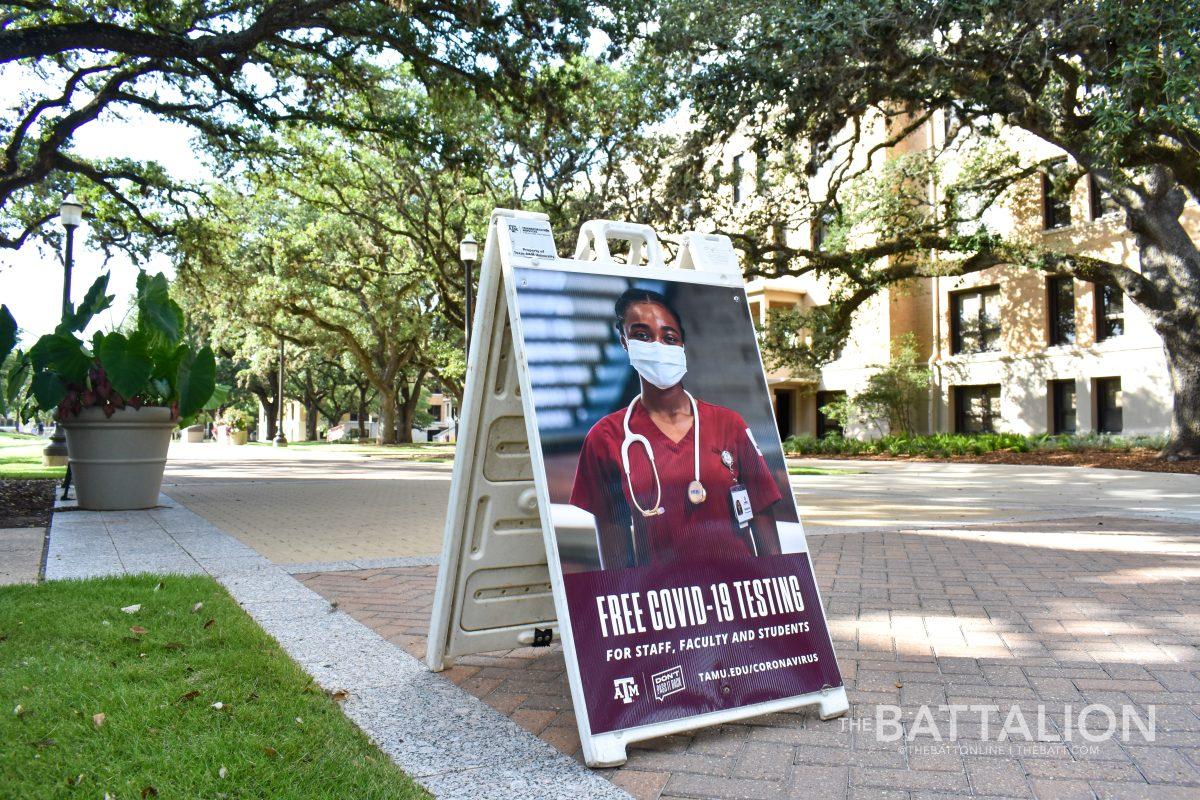As the Delta and Delta-plus variants of COVID-19 spread worldwide, Texas A&M University officials provided current regional statistics and offered new guidance to the Aggie community in preparation for a full-capacity semester. Amid rising infections and low vaccination rates, Brazos County has been designated a high-transmission area by the Center for Disease Control. If Aggies take the necessary steps, the community may be able to mitigate risks, officials said.
The Delta variant now makes up more than 80 percent of active infections in the United States, Director of Student Health Services Martha Dannenbaum said.
“It’s pretty virulent, it’s easy to spread, and we’re seeing that in the vaccinated population as well,” Dannenbaum said.
For the university’s administration, COVID-19 response is now a game of wait-and-see, Chief Operations Officer Greg Hartman said.
“We have to keep a close eye on this,” Hartman said. “Since summer began we’ve said our role is maintenance and observation. Maintenance means making sure we maintain our capacity for testing and vaccination capabilities, as well as the websites for reporting information. Observation is to keep an eye on what’s going on, not just in the campus community but in the Brazos Valley and the state.”
The university is particularly watching for significant spikes among the number of infections, hospitalization and hospital capacities, Hartman said. Additionally, because most students come from outside of College Station, rates in other cities are being tracked.
Infrastructure from the past year has been kept in place, such as free testing across all campuses to detect spikes in the community, which will become mandatory for a set amount of time at the start of the semester.
“We’re going to have a mandatory testing period so that we can check everyone entering campus, identify those who may be infected and are possibly asymptomatic, then isolating them until they’re better and less contagious so we can contain the amount of spread in the community,” Hartman said.
As explained in the COVID-19 management and guidance plans released Aug. 5, those who don’t fulfill the requirements for testing could face student action, such as not being held in good standing with the university. For employees or faculty members, it could lead to a reprimand and letter in their administrative file, which can impact future career advancement, Hartman explained.
Mask-wearing, social distancing and self-isolation will continue to be encouraged under the guidance plans — and not just as a precaution against COVID-19.
“We did not diagnose the flu at all at the health center this year,” Dannenbaum said. “We did not have a single positive influenza test. None. Zero. None. ”
According to data from Student Health Services as of July 29, out of 2,082 total flu tests not a single one came back positive.
“And why is that?” Dannenbaum said. “Part of it is all the things we were doing to prevent the spread of COVID variants prevented the spread of all the things we see,” Dannenbaum said. “The regular, routine colds, flu and COVID[-19]. We reduced the transmission of all respiratory conditions by wearing face coverings, by keeping our distances, by staying home when we were sick, paying attention to hand-washing and simply being more mindful.”
Unless new legislation is passed, vaccinations and precautions cannot be required for students, faculty and staff at this time. While the vaccination rate is still below average in Brazos County, at roughly 41 percent, estimates of the student vaccination rates from the School of Public Health are between 20 and 25 percent, Dannenbaum said. Although, she said she is more optimistic.
“As of last Tuesday, we have given 10,954 [vaccines], and of that, 9,886 were students,” Dannebaum said. “Those are just the ones that we’ve done. We know that many people have been vaccinated at other providers such as H-E-B and pharmacies.”
Regardless, the rate needs to be higher, she said. With the higher transmission and hospitalizations due to Delta, vaccination is still the best defense.
“It’s very similar to the flu shot, you get a flu shot and may still get the flu, but it’s usually much shorter and much less severe,” Dannenbaum said. “Your risk of dying goes down a lot.”
A&M officials respond to Delta variants, vaccination rates
August 5, 2021
Photo by Photo by Abbey Santoro
Opinion columnist Zach Freeman advocates a return to mask wearing to prevent the spread of the new omicron variant of COVID-19.
0
Donate to The Battalion
$2065
$5000
Contributed
Our Goal
Your donation will support the student journalists of Texas A&M University - College Station. Your contribution will allow us to purchase equipment and cover our annual website hosting costs, in addition to paying freelance staffers for their work, travel costs for coverage and more!
More to Discover










